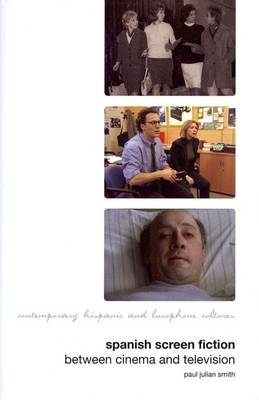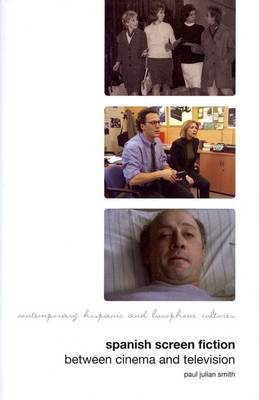
- Retrait gratuit dans votre magasin Club
- 7.000.000 titres dans notre catalogue
- Payer en toute sécurité
- Toujours un magasin près de chez vous
- Retrait gratuit dans votre magasin Club
- 7.000.0000 titres dans notre catalogue
- Payer en toute sécurité
- Toujours un magasin près de chez vous
Description
This pioneering book is the first to argue that cinema and television in Spain only make sense when considered together as twin vehicles for screen fiction. The Spanish audiovisual sector is now one of the most successful in the world, with feature films achieving wider distribution in foreign markets than nations with better known cinematic traditions and newly innovative TV formats, already dominant at home, now widely exported. Beyond the industrial context, which has seen close convergence of the two media, this book also examines the textual evidence for crossover between cinema and television at the level of narrative and form.
The book, which is of interest to both Hispanic and media studies, gives new readings of some well-known texts and discovers new or forgotten ones. For example it compares Almodóvar's classic feature Mujeres al borde de un ataque de nervios ('Women on the Verge of a Nervous Breakdown') with his production company El Deseo's first venture into TV production, the 2006 series also known as Mujeres ('Women'). It also reclaims the lost history of female flat share comedy on Spanish TV from the 1960s to the present day.
It examines a wide range of prize winning workplace drama on TV, from police shows, to hospital and legal series. Amenábar's Mar adentro ('The Sea Inside') an Oscar-winning film on the theme of euthanasia, is contrasted with its antecedent, an episode of national network Tele5's top-rated drama Periodistas. The book also traces the attempt to establish a Latin American genre, the telenovela, in the very different context of Spanish scheduling. Finally it proposes two new terms: 'Auteur TV' charts the careers of creators who have established distinctive profiles in television over decades; 'sitcom cinema' charts, conversely, the incursion of television aesthetics and economics into the film comedies that have proved amongst the most popular features at the Spanish box office in the last decade.
Spécifications
Parties prenantes
- Auteur(s) :
- Editeur:
Contenu
- Nombre de pages :
- 256
- Langue:
- Anglais
- Collection :
- Tome:
- n° 3
Caractéristiques
- EAN:
- 9781846312021
- Date de parution :
- 19-10-09
- Format:
- Livre broché
- Format numérique:
- Trade paperback (VS)
- Dimensions :
- 155 mm x 231 mm
- Poids :
- 317 g

Les avis
Nous publions uniquement les avis qui respectent les conditions requises. Consultez nos conditions pour les avis.






